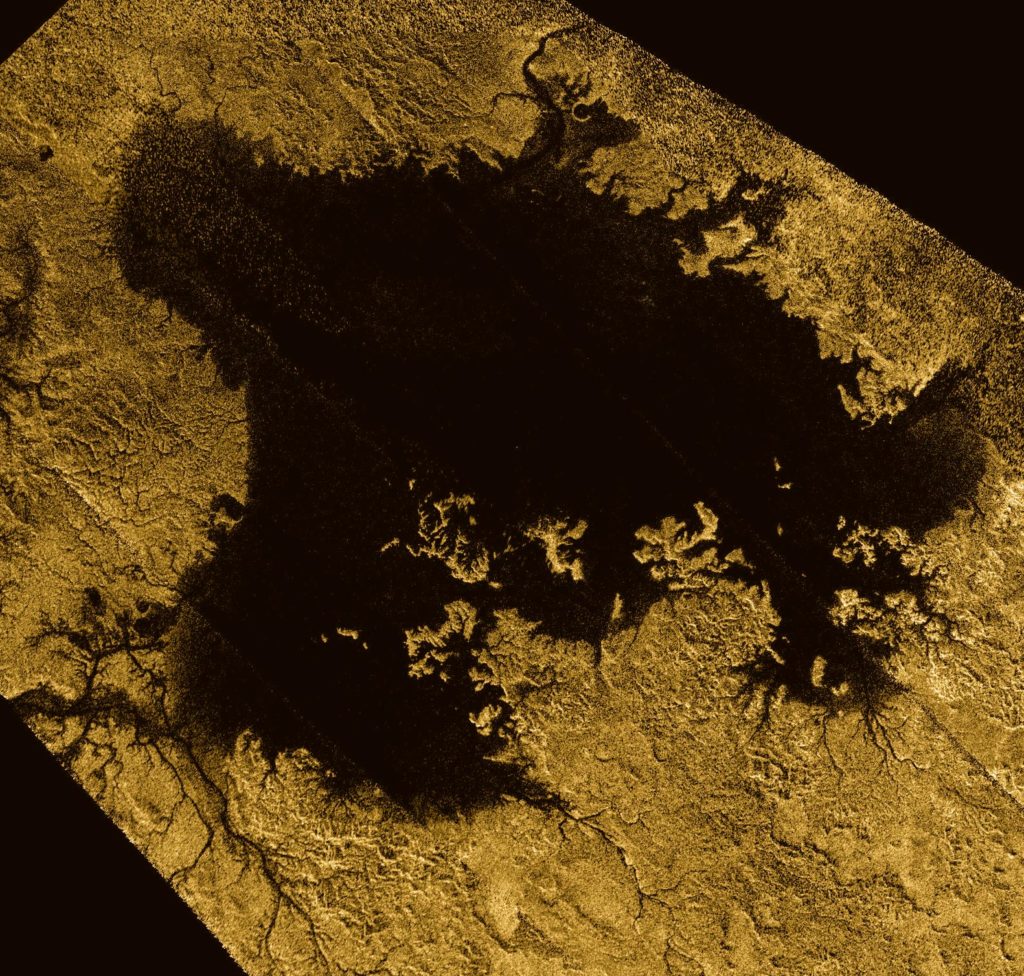Featuring image: Titan seen in infrared light. NASA/JPL-Caltech/Stéphane Le Mouélic, University of Nantes, Virginia Pasek, University of Arizona, public domain (CC0)
Paper: Titan in a Test Tube: Organic Co-crystals and Implications for Titan Mineralogy
Authors: M. L. Cable, T. Runčevski, H. E. Maynard-Casely, T. H. Vu and R. Hodyss
Titan, Saturn largest moon, is a strange world. Its surface is covered by ice, dunes and haze of organic molecules and lakes of liquid methane. It even rains. The diversity of surface features may remind us of our own home planet, but the chemistry between these two celestial bodies lies worlds apart.
The surface of planet Earth is built up mainly by silicate minerals like quartz, feldspart or amphiboles. Also our Moon and Mars have a silicate crust. While the mineralogy between these terrestrial worlds is quite similar, researchers started to look out further into our solar system for more exotic crystals. Many moons around the gas giants Jupiter and Saturn have an entirely different composition compared to that of the inner planets. Their surfaces are covered by ice and some of them maintain atmospheres. Titan is one of these moons, orbiting Saturn. From the Cassini-Huygens space mission we know that it has a very dense atmosphere and many different organic molecules can be found on its icy surface. Now, researchers were able to predict the existence of organic minerals on Titan and started to test their properties in laboratory experiments.

We know from Earth how important surface rocks are for the climate system and geographical features. To better understand environments on Titan, more scientists started to look at the mineralogy on Titan’s surface. In contrast to Earth’s minerals, Titan’s mineralogy is not based on anorganic, but organic compounds. Morgan Cable and her group tried to synthesise crystals out of organic molecules under temperatures and pressures which correspond to the surface conditions on Titan. They chose their starting molecules based of our knowledge on the most common organic molecules from prior space missions. But instead of growing crystals from just one of the most abundant molecules, they tried to include the chemical diversity of Titan by studying minerals made up by multiple components. These minerals, made up of two different kinds of molecules, are called co-crystals.
The scientists identified eight different co-crystals, that would be stable on Titan and were able to analyse the structure of five of them. They were surprised to learn that the structures of these co-crystals could be divided into several classes. Two co-crystals formed 3-dimensional frameworks, one a layering of 2-dimensional sheets and another one formed chains. These structures show fascinating similarities to the different classes of terrestrial minerals. For example, quartz forms 3-dimensional connections, while biotite consists of layers and amphibole grows in chains.
Two of the eight co-crystals may be very abundant on Titan, as their constituents are some of the most common organic molecules: a butane-acetylene co-crystal and an acetonitrile-acetylene co-crystal. Butane and acetylene are both highly soluble in liquid hydrocarbons like methane. Therefore, this co-crystal could be very common in dry regions on Titan where their formation would be analogous to terrestrial evaporites. While acetonitrile is not as soluble as acetylene, acetonitrile-acetylene could form when dissolved acetylene and acetonitrile grains come in contacted in rivers or through rain.
This exciting field of exogeology is just about to emerge. NASA will launch its Dragonfly mission in 2026, which will explore the surface of Titan. The insights of this upcoming mission will shed new light on Titan’s surface chemistry and our understanding of mineralogy on other worlds.
License:
‘Mineralogy on other worlds’ by Max Winkler is licensed under a Creative Commons Attribution-ShareAlike 4.0 International License.

